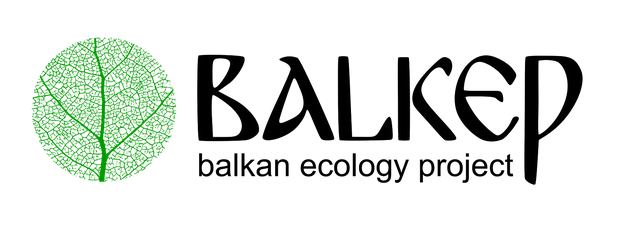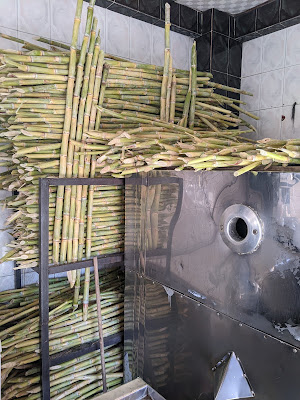I've been sharing some observations I made during a winter trip to Eygpt on the blog and during this post, we'll cover, a visit to Luxor, horticulture along the Nile, and a Sugar Cane harvest.

It's interesting to consider that the accumulation of sediment in the great lakes of Africa millions of years ago, would result in water overflowing the banks to form a river that would spawn the emergence of one of the most iconic and revered civilizations that humans have ever witnessed.
Water is indeed life and nowhere exemplifies this better than the Nile.
Luxor and Horticulture along the Nile
After spending three weeks in Cairo I took the train south to Luxor, a tourist hotspot on the Nile that features some of Egypt's most popular Ancient Egyptian temples and tombs. The view from both sides of the train was pretty much what you can see in the below photo. Lush green bands of agriculture with desert mountains in the background, punctuated by various towns and cities along the way. The agriculture appears to be mainly wheat and alfalfa this time of year( February). Date palms are often planted along farm tracks and at seemingly random intervals within the fields
Arriving in Luxor from Cairo it is immediately obvious the pace of life is more relaxed here. Arriving in the dark, the lack of dust/smog in the air was striking, like cleaning off a smudged camera lens.
There is a beautiful Nile-side promenade across the road from the Temple of Luxor which is itself very impressive. As a tourist, in an area where tourists congregate, you will most likely get pitched some service or another 30 times a day, but get away from the tourist trail and people are friendly and going about their business.
Most of the city is established on the east side of the Nile but there are a lot of tourist accommodations on the west side and the west side is where the majority of tombs and temples are located. Village life on the west bank of Luxor is extremely relaxed. Not only does it feel like you have stepped back into how life would have been a few 1000 years ago, it most probably is. I had this feeling that no matter what tragedy humans may have to endure within the next 1000 or so years, this place will be just fine.
There are various canals cut into the land, often planted with Date palms with swathes of Phragmites australis - Common Reed growing along the banks.
Mainly wheat and alfalfa grow in open fields this time of year. The Alfalfa is harvested daily and brought into the city for the horses that taxi the tourists around.
Some of the gardens have a layer of fruit trees growing above the field crops, as seen in the below photo(Mango, citrus, and date palm). These are great examples of simple multi-layered polyculture gardens and are probably extremely productive.
Pretty much all of the restaurants on the West Bank of Luxor are family-run and will serve home-cooked Egyptian food harvested from their gardens. The restaurants will often serve 6 or 7 different dishes in small bowls and all of them are delicious.
Another common garden fruit tree is Guava - Psidium guajava. Yet to try the fruit
A short walk away from the ferry station on the Westbank of Luxor, I chanced upon this Mango (Mangifera indica) orchard. Introduced from India in 1825, Mango is commonly cultivated along the Nile valley.
The whole orchard is flood irrigated from the Nile with bunds, crafted from the deep and fertile alluvial soil, to retain the water in certain areas. There must be a number of different cultivars planted in the orchard as the flowers were absent on some of the trees and in various stages of development on others.
There is a Banana grove next to the Mango orchard on one side. It would be interesting to study the row of Mango and Banana plants that converge to see if each respective crop has any difference in growth rate, yield, and health compared to the rows of the same plants within the monoculture rows.
I've never visited anywhere on earth without eventually crossing paths with Chenopodium album - Lambs quarter. An edible ruderal growing here on the post-irrigated Mango orchard floor
Walking further west away from the Nile, towards the desert mountains (Valley of Kings and Queens) this bizarre scene came into view.
Ever bought a jar of sundried tomatoes immersed in olive oil from the supermarket? The rustic aesetic on the label, emanating vibes of sunny Mediterranean farms with sweet old folk picking, slicing, and drying tomatoes on rooftops from plants they have lovingly tended. Reality check, this is how it's done.
As you move further away from the Nile the greenery of the land gives way to cream-colored rock and sand and it is here you can find some of the greatest artifacts of the Ancient Egyptian civilization.
Just below the desert mountain and within the mountians, Archaeologists are still discovering new temples and structures and in some places, you can see the water on the floors of freshly dug excavation pits and older pits with semi-aquatic plants growing. I assume the river would have meandered this far west over centuries, resulting in the burial of these ancient sites.
As you move uphill away from the Nile the landscape is void of plant life and it seems to be a fitting place to bury the dead. Animal tracks and insect and reptile borrows are pretty obvious as you walk around the landscape so it seems there is life around.
The transition from fertile land to barren land is almost immediate with just a few species inhabiting the edges, the most prominent in this area being Ziziphus spinia-christi - Christ's thorn jujube a native of North Africa.
Sugar Cane - Saccharum officinarum
Sugar cane has a long history of use in Egypt although the plant most likely used in Ancient Egypt was Saccharum spontaneum which was being cultivated two millennia before its related species, the sugar cane - Saccharum officinarum came on the scene. Traveling around up the Nile generally on land a few km away from the river banks sugar cane is cultivated and this time of year(February) is the harvest season.
A lot of the cultivation in the Luxor region is small family farms with groups of workers hired to cut, prune and pack the canes. A group of the harvesters invited me over to see what was going on and offered me some cane that can be stripped to the pith and chewed fresh. It tastes great.
The canes are stacked into bundles and loaded onto trailers, the softer herbaceous growth at the tips is collected and used as fodder for cattle, horses, goats, and donkeys. Nothing is wasted.
Local stores stock some canes and make sugar cane juice for their customers but the bulk of the canes are taken to factories and turned into unrefined sugar.
This time of year the roads that run adjacent to the Nile are busy with trucks towing trailers, packed full of sugar cane, to the processing plants. As the trucks slow down in the traffic you'll often see children pulling out a cane or two, faces painted with mischievous delight :)
That's all for now, during the next post, Dylan comes out to meet me and we head over to the Red Sea, and then into the Nubian desert in search of reptiles.
Support Our Project
If you appreciate the work we are doing you can show your support in several ways.
Regenerative Landscape Design - Online Interactive Course
Want to learn more about Regenerative Landscape Design? Join The Bloom Room!
What you can expect as a member of the Bloom Room




























nice post
ReplyDelete